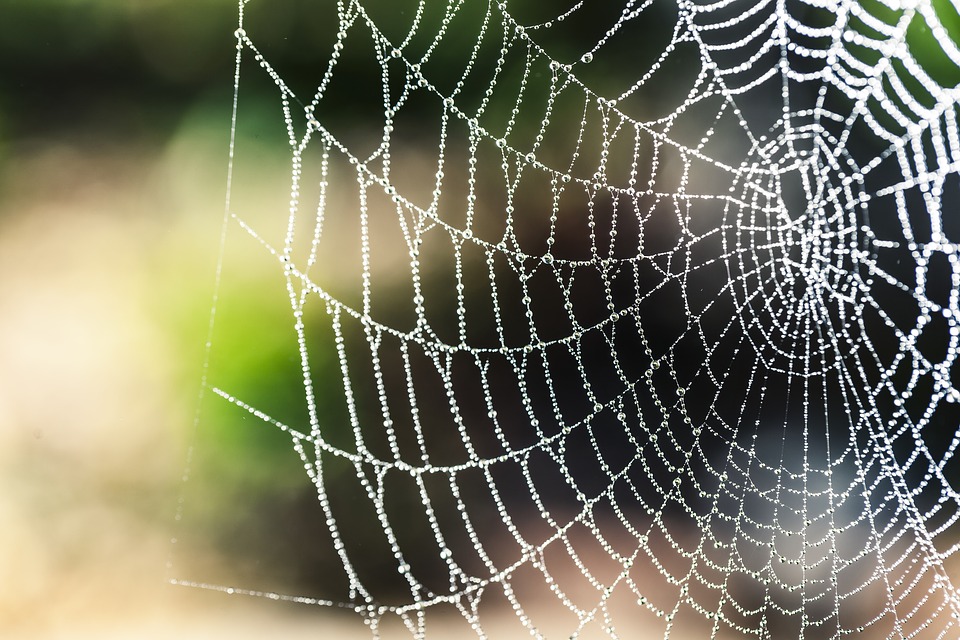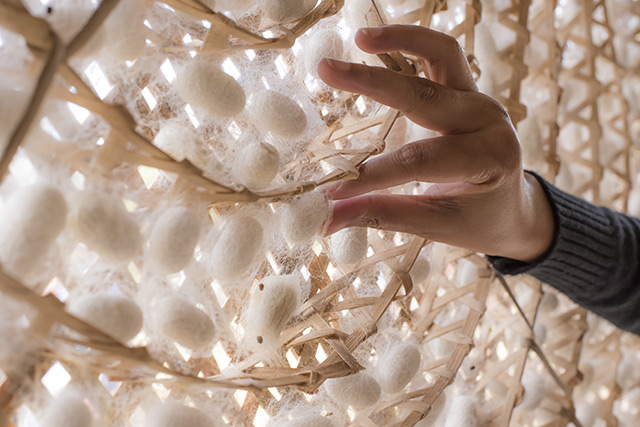
Its creator dubbed it "Dragon Silk." Yet the bullet-proof body armor that will be made from it is dubbed the "spider suit." The odd naming conflict is because the material is actually spider silk spun by silkworms, an article in the Daily Mail reported.
Natural spider silk is one of the strongest materials in existence. Many believe it can be used to make body armor that is lighter, more flexible, and tougher than Kevlar and other existing fabrics.
However, spider silk is very difficult to produce in any large quantities. Mass production involves raising large colonies of the useful insects, but the spiders preyed on each other more often than not.
Silkworms have been used for many millennia to produce large amounts of silk. The traditional silk infrastructure churns out more than 150,000 tons of silk each year. Silkworms also eat mulberry leaves instead of each other.
Michigan-based biotech company Kraig Biocraft Laboratories altered silkworms so that they would produce a modified spider silk. These mutant silkworms can be added to the existing silk production process with little fuss. (Related: Produce ALERT: New EXPERIMENTAL Monsanto Franken-Fruits hit the produce racks soon – watch out for genetically mutated mushrooms, tomatoes, bananas and strawberries.)
Genetically modified silkworms will spin spider silk for body armor production
Kraig claims that Dragon Silk shares the same strength as natural spider silk. The biotech material is also very flexible, which makes it more comfortable to wear while allowing the user to move faster and better than if they were laden with conventional body armor.
The company recently delivered the first batch of armor panels made from Dragon Silk to the U.S. Army for initial testing. In a statement posted on its website, Kraig said that the panels will tested for ballistic impacts.
“After years of research and investment, developing this ground breaking technology, we are very excited to now see it in the hands of the U.S. Army,” stated the company's chief operations office Jon Rice. “For me, personally, and for the Company, the opportunity to help protect the brave men and women whom dedicate themselves to our protection is a great honor.”
Kraig is also improving its production capacity of spider silk products. It is in the middle of setting up a new facility in Vietnam. The silkworms raised in that production site will also have the genetic proteins to produce body armor-grade "Dragon Silk" material.
Biotech company hoards patents for genetic data of spider silk proteins
Researchers know how to copy the proteins that make up spider silk. But until Kraig came up with Dragon Silk, there were two roadblocks that prevented production of the actual silk.
First, researchers could not form the proteins into a fiber that displayed the strength and flexibility they desired. Second, even if they did succeed in making spider silk with said mechanical traits, the process would be too expensive for mass production.
Kraig secured the sole right to use patented genetic sequences for the proteins that make up spider silk. It then implanted these sequences into the DNA of the domesticated silkworm, the caterpillar form of the silkmoth (Bombyx mori).
Silk glands make up 40 percent of the body weight of a silkworm. The glands produce large amounts of fibroin, a protein that is spun into a composite thread we call silk.
Instead of producing fibroin, the glands of the genetically-modified caterpillars produce proteins normally found in spider silk. So far, the silkworms have not displayed any signs of other spider-like behavior.
To learn more about the dangers of using genetically-modified organisms like these silkworms, visit BioTech.news.
Sources include:
Please contact us for more information.
















